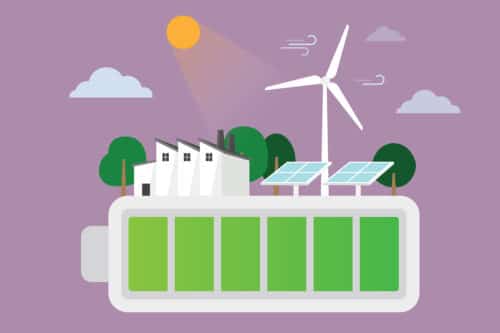A Stanford team is advancing renewable energy storage with cutting-edge research on liquid hydrogen storage technologies.

As California rapidly transitions to renewable energy sources, the need for efficient power storage technologies becomes critical. Solar power diminishes at night and during winter, while wind power fluctuates. Consequently, the state relies heavily on natural gas to balance the variability of renewable energy. Hydrogen is a versatile energy carrier but poses challenges in containment and transportation. The Stanford team is developing a method to selectively convert and store electrical energy in liquid fuels without producing gaseous hydrogen.
Batteries, including lithium-ion variants, are commonly used for energy storage in grids, smartphones, and electric vehicles. However, the scale of storage required for the electric grid necessitates the exploration of supplementary technologies. According to the California Energy Commission, battery storage capacity in California has surged from 500 megawatts in 2018 to over 10,300 MW in 2024, with projections indicating a need for 52,000 MW by 2045.
Liquid Organic Hydrogen Carriers (LOHCs), capable of storing and releasing hydrogen using catalysts and heat, are potential candidates for large-scale energy storage. Waymouth’s team focuses on isopropanol and acetone for hydrogen storage and release. Isopropanol, a high-density liquid form of hydrogen, can be stored or transported via existing infrastructure until needed.
Advancing Isopropanol Production
Current methods to produce isopropanol with electricity are inefficient. Daniel Marron, lead author of the study, developed a catalyst system combining protons and electrons with acetone to generate isopropanol without producing hydrogen gas, using iridium as the catalyst and cobaltocene as an effective co-catalyst. Cobalt, commonly used in batteries, is in high demand. The Stanford team aims to leverage cobaltocene’s properties to develop more abundant and affordable catalysts, such as iron, for future LOHC systems.
The team mentions that this is basic fundamental science, but they think they have a new strategy for more selectively storing electrical energy in liquid fuels. The potential for LOHC systems to enhance energy storage for various sectors is significant. They further added that when you have excess energy, you store it as isopropanol. When you need the energy, you can return it as electricity.The electric grid uses energy at the same rate that you generate it. If you’re not using it at that time, and you can’t store it, you must throw it away.






